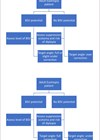The authors aimed to evaluate current clinical practice of quantifying ductions and fields of binocular single vision (BSV) in the UK and Ireland. An online questionnaire was used and was circulated via the British & Irish Orthoptic Society (BIOS) member newsletter. The survey included 21 questions – 10 mandatory. Of 1290 BIOS members, 685 (53%) opened the newsletter. The questionnaire was completed by 105 orthoptists; 15% response rate of those opening the newsletter and 8.1 of total BIOS members. Orthoptists used quantitative measures for ductions (70%) and BSV (68%). About one third used Goldmann and one fifth used Aimark. Other methods included the Lister, Octopus 900, Thomson binocular vision analyser and ocular motility analyser. One third did not take quantitative measures. There was a low frequency of measures undertaken at a median of one to two per week. The number of quantitative measures were significantly less than the number of patients seen with limited eye movements. The reasons for little / no measurements include not enough time (reported by one third) and having no methods available or insufficient space, only being done in selected cases and not considering methods accurate or repeatable. Most (89 and 95% responses) agreed measures of ductions and BSV are important when monitoring conditions. If faster portable methods were available, a significant number would increase use of these measures. The authors conclude there is limited information on standardised method to quantify ductions and BSV.
Quantifying ductions and fields of BSV
Reviewed by Fiona Rowe
Measurement of ductions and fields of binocular single vision (BSV): orthoptic practice in the UK and Ireland.
CONTRIBUTOR
Fiona Rowe (Prof)
Institute of Population Health, University of Liverpool, UK.
View Full Profile




